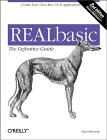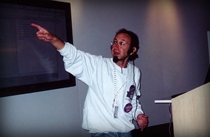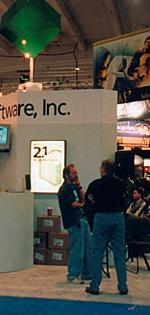-
Here’s my original review and description of REALbasic in TidBITS.
-
I tried out REALbasic as a way to teach programming to kids. This article talks about what a great way to learn programming REALbasic programming.
-
This article describes REALbasic from the HyperCard programmer’s point of view.
-
Here’s an article about learning object-oriented programming with REALbasic.
-
Here’s an article (originally published in the now-defunct Mac Developer Journal) that summarizes some interesting recent changes in the language, and argues that the REALbasic language, simply considered as an object-oriented programming language, is powerful, elegant, and deserving of respect.
-
Here’s an article about regular expressions in REALbasic (and in general, since REALbasic regular expressions are simply an object-oriented version of PCRE) from the first-ever issue of REALbasic Developer.
-
Here’s an article about text encodings in REALbasic. Text encodings caused RB programmers some consternation when they were introduced in REALbasic 5, but they are not really difficulty, and they are of great importance, especially since REALbasic is cross-platform, runs on the Unicode-based Mac OS X, and so forth.
-
This article describes changes in version 5 of REALbasic. And here’s one describing changes in version 5.5 of REALbasic.
-
I wrote a series of columns about implementing various standard algorithms (perhaps these would be better referred to as basic algorithmic techniques?) in REALbasic:
-
The first one: linked lists, stacks, queues, and REALbasic arrays
-
Sorting: part 1 is about bubblesort and using class interfaces to implement generalized sorting in REALbasic; part 2 is about heapsort
-
 REALbasic, the BOOK!
REALbasic, the BOOK!
-
I’ve posted most of the code examples from the second edition.
-
You can read Chapter 3 and Chapter 4 of the second edition online.
-
You can order the second edition through amazon.com.
-
I’ve started a new errata page so that I can make additions and corrections as Mac OS X and REALbasic continue to develop. (Actually that page has largely fallen into abeyance.)

I like to talk and teach about REALbasic in person, too! Here’s me haranguing the crowds at Macworld Expo in January, 2001.
